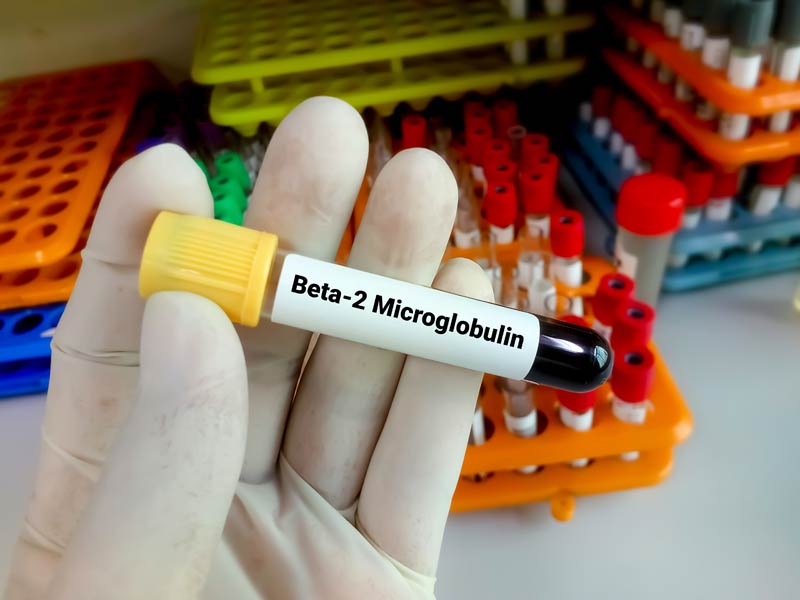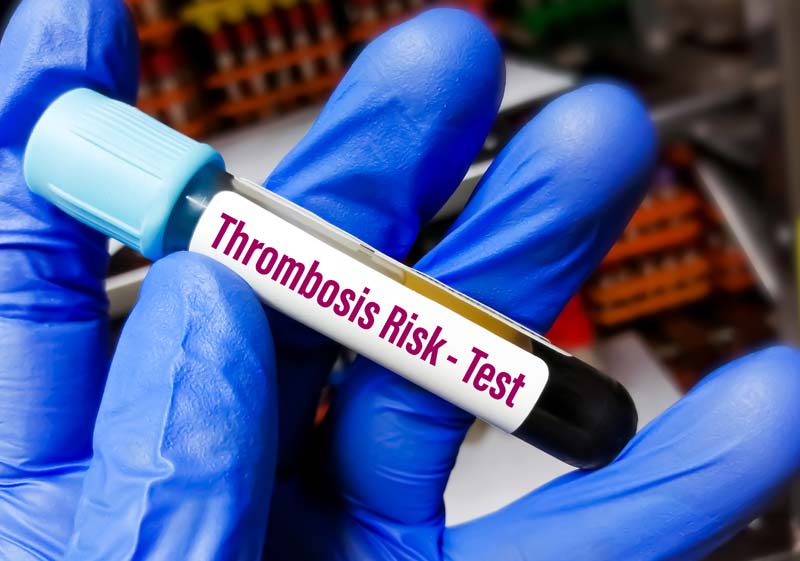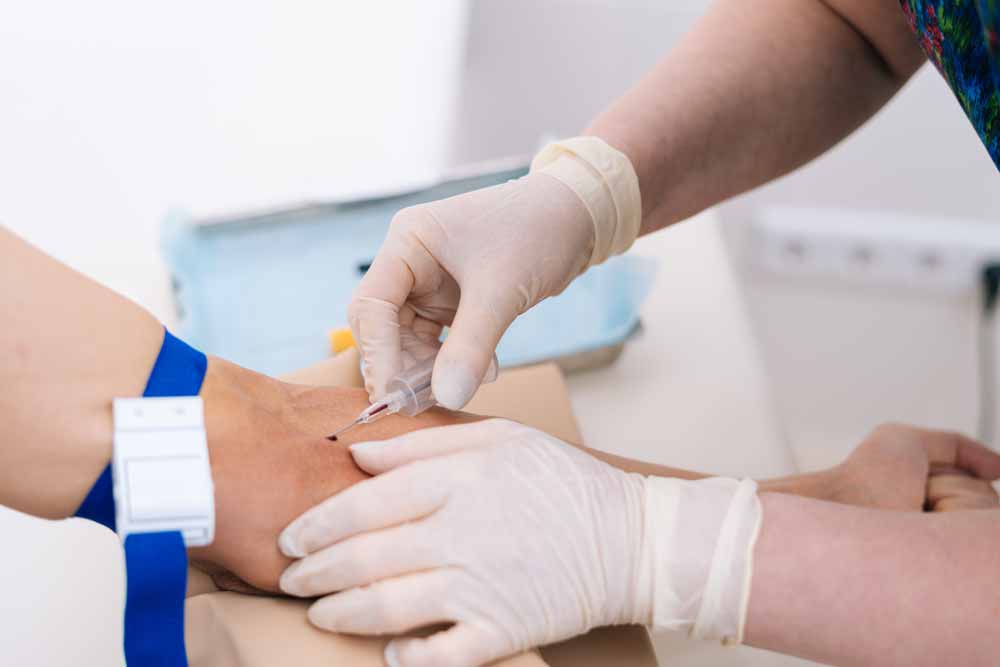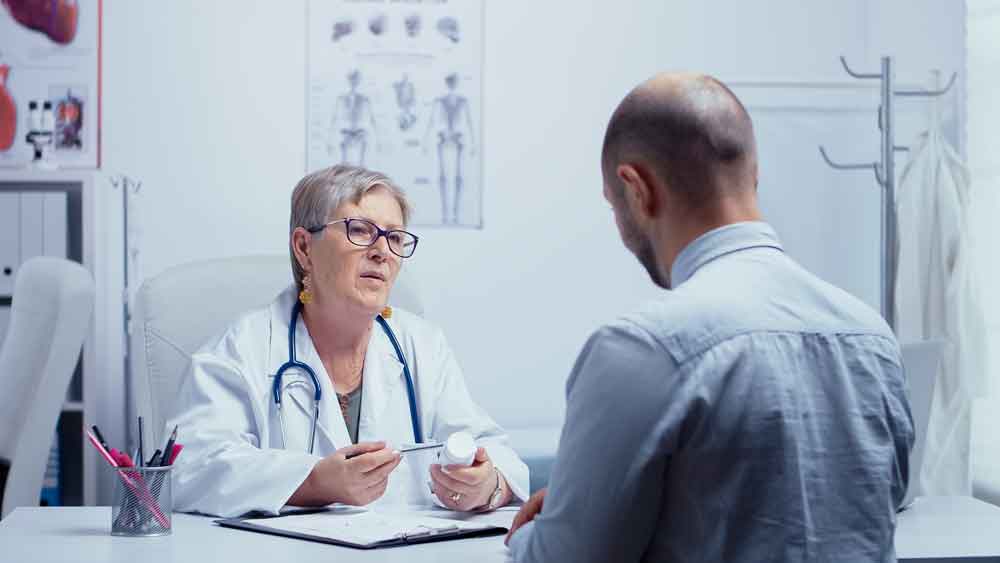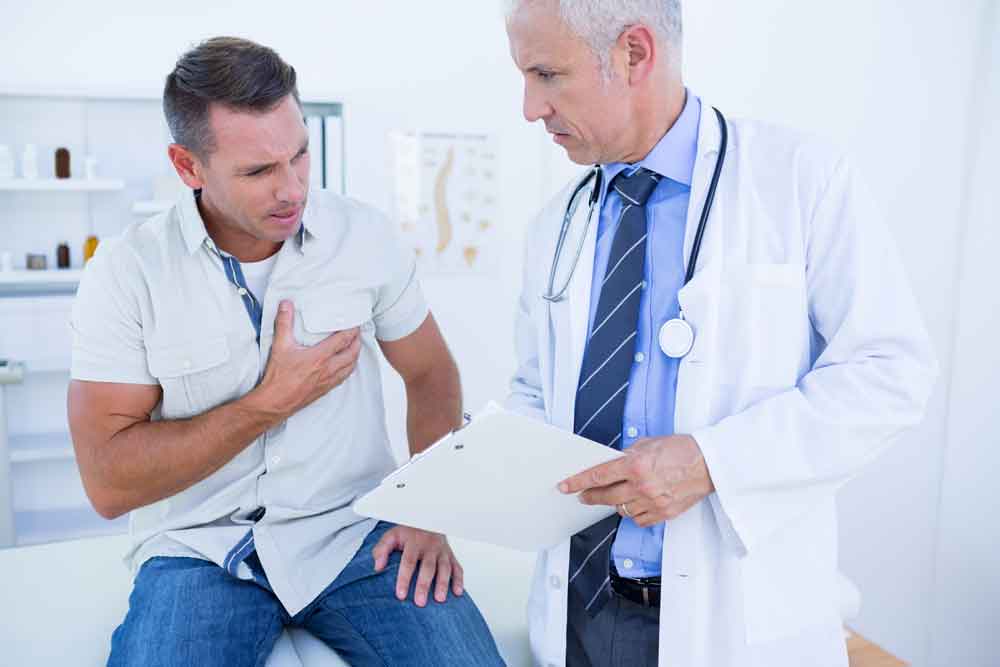Scoring systems in primary myelofibrosis
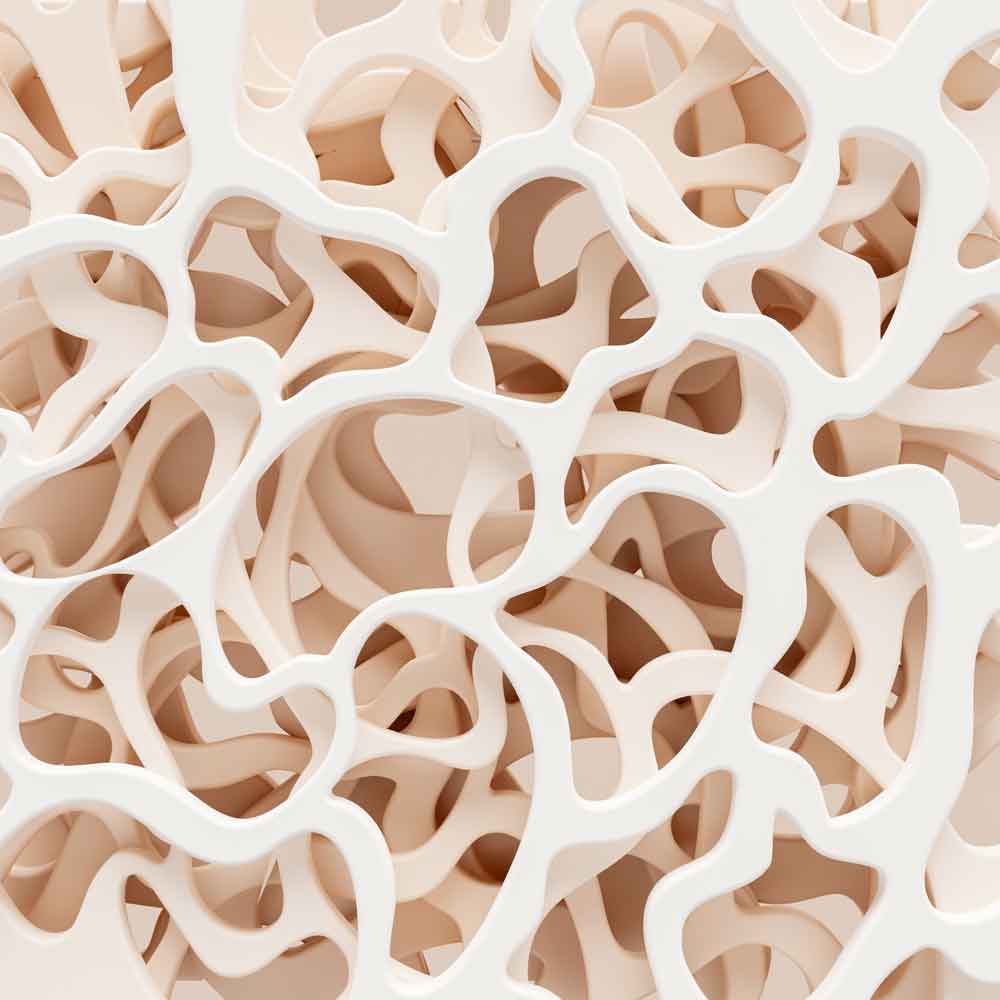
Several scoring systems to determine the prognosis in primary myelofibrosis have been developed.
DIPSS-plus
The Dynamic International Prognostic Scoring System–plus (DIPSS-plus) for primary myelofibrosis uses the following eight adverse factors to predict survival:
- Age older than 65 years
- Hemoglobin level lower than 10 g/dL
- Leukocyte count higher than 25 × 10 9/L
- Platelet count lower than 100 × 10 9 /L
- Circulating blasts of 1% or more
- Constitutional symptoms
- Red blood cell transfusion dependency
- Unfavorable karyotype (ie, complex karyotype or sole or two abnormalities that include +8, -7/7q-, i(17q), inv(3), 5/5q-, 12p-, or 11q23 rearrangement)
DIPSS-plus classifications and median survival times are as follows:
- Low risk (0 adverse points): 15.4 years
- Intermediate-1 risk (1 adverse point): 6.5 years
- Intermediate-2 risk (2-3 adverse points): 2.9 years
- High risk (4-6 adverse points): 1.3 years
| Risk factor | IPSS | DIPSS |
| Age >65 years | 1 | 1 |
| Constitutional symptoms* | 1 | 1 |
| Hgb < 10 g/dL | 1 | 2 |
| WBC >25×109/L | 1 | 1 |
| Peripheral blasts ≥1 % | 1 | 1 |
* Constitutional symptoms, defined as weight loss over 6 months, unexplained fever, and night sweats.
IPSS – International Prognostic Scoring System; DIPSS – Dynamic International Prognostic Scoring System; Hgb – hemoglobin; WBC – white blood cell.
DIPSS-plus
| DIPSS intermediate-1 | 1 |
| DIPSS intermediate-2 | 2 |
| DIPSS high risk | 3 |
| RBC transfusion requirement | 1 |
| Platelet, 100×109/L | 1 |
| Unfavorable karyotype* | 1 |
* Unfavorable karyotype, defined as complex karyotype chromosomal abnormalities, or 1–2 abnormalities that include +8, -5/5q-, -7/7q-, i(17q), 12p-, inv(3), or 11q23 rearrangement
Median survival, years (points = years)
| Risk group | IPSS | DIPSS | DIPSS-plus |
| Low | 0 – 11,3 | 0 (not reached) | 0 – 15,4 |
| Intermediate-1 | 1 – 7,9 | 1–2 – 14,2 | 1 – 6,5 |
| Intermediate-2 | 2 – 4 | 3–4 – 4 | 2–3 – 2,9 |
| High | ≥3 – 2,3 | 5–6 – 1,5 | 4–6 – 1,3 |
MIPSS70
The MIPSS70 (mutation-enhanced international prognostic scoring system for transplant-age patients) includes clinical risk variables and mutations; subsequent versions include karyotype (MIPSS70+ and MIPSS70+ version 2.0). This system was developed for transplant decision-making in patients age 70 years or younger.
MIPSS70 is based on three genetic variables and six clinical risk factors. The genetic variables are as follows:
- Absence of CALR type 1/like mutation
- Presence of any high molecular risk [HMR] mutation, specifically ASXL1, SRSF2, EZH2, IDH1, or IDH2
- Presence of ≥2 HMR mutations)
The clinical risk factors are as follows:
- Hemoglobin < 10 g/dL
- Leukocytes >25 × 10 9/L
- Platelets < 100 × 10 9/L
- Circulating blasts ≥2%
- Bone marrow fibrosis grade ≥2
- Constitutional symptoms
MIPSS70+ added “unfavorable” karyotype as a fourth genetic variable, and reduced the number of clinical risk factors to four (hemoglobin < 10 g/dL, leukocyte count >25 × 109/L, circulating blasts ≥2%, and constitutional symptoms). Those clinical and genetic risk factors were used to classify three risk categories for MIPSS70 (low, intermediate, and high) and four risk categories for MIPSS70+ (low, intermediate, high, and very high).
In the most recent version, MIPSS70+ 2.0, clinical risk variables and points are as follows:
- Severe anemia (hemoglobin < 8 g/dL in women, < 9 g/dL in men): 2 points
- Moderate anemia (hemoglobin 8–9.9 g/dL in women, 9–10.9 g/dL in men): 1 point
- Circulating blasts ≥2%: 1 point
- Constitutional symptoms: 2 points
Genetic variables and points are as follows:
- Very high risk (VHR) karyotype (single/multiple abnormalities of −7, i(17q), inv(3)/3q21, 12p−/12p11.2, 11q−/11q23, +21, or other autosomal trisomies, not including +8/+9 [eg, +21, +19]): 4 points
- Unfavorable karyotype (all other abnormalities): 3 points
- ≥2 HMR mutations: 3 points
- One HMR mutation: 2 points
- Absence of CALR type 1/like mutation: 2 points
Total score, risk factor level, and median survival, and estimated 10-year survival are as follows:
- 0 points – Very low ris; median not reached (92%)
- 1–2 points – Low risk; 16.4 years (56%)
- 3–4 points; Intermediate risk 7.7 years (37%)
- 5–8 points – High risk; 4.1 years (13%)
- ≥9 points – Very high risk; 1.8 years (< 5%)
Observation alone is advised for patiens whose MIPSS70+ version 2.0 scores are in the very low and low risk categories. Allogeneic stem cell transplant is the treatment of choice for high and very high risk disease. Patients with intermediate-risk disease are best served by participation in clinical trials.
GIPSS
The GIPSS (genetically inspired prognostic scoring system) is based exclusively on genetic markers: mutations and karyotype. Adverse factors and scores are as follows:
- VHR karyotype – 2 points
- Unfavorable karyotype – 1 point
- Absence of type 1/like CALR mutation – 1 point
- Presence of ASXL, SRSF2, and U2AF1Q157 mutations – 1 point
GIPSS risk categories and median survivals (5-year survival rate) are as follows:
- Low (0 points): 26.4 years (94%)
- Intermediate-1 risk (1 point): 8.0 years (73%)
- intermediate-2 (2 points): 4.2 years (40%)
- High (≥3 points): 2 years (14%)
Tefferi et al favor starting determination of prognosis with the GIPSS: patients with low-risk disease can receive long-term observation, while those with high-risk disease are candidates for allogeneic stem cell transplantation. MIPSS70+ version 2.0 can be considered for confirming the most appropriate treatment approach for an individual patient.
Register on our website right now to have access to more learning materials!
Subscribe to our pages:
Multiple Myeloma Diagnostic Criteria – Online Calculator
Revised Multiple Myeloma International Staging System (R-ISS) Online Calculator
Revised Multiple Myeloma International Staging System (R-ISS) – prognostication tool for myeloma patients based on…
Multiple Myeloma International Staging System (ISS) Online Calculator
Multiple Myeloma International Staging System (ISS) prognosticates the severity of multiple myeloma based on routinely…
SAVED VTE Score
SAVED score for venous thromboembolism risk stratification in patients with multiple myeloma receiving immunomodulators. [ezfc…
IMPEDE VTE Score
IMPEDE score for venous thromboembolism risk stratification in patients with multiple myeloma receiving immunomodulators. [ezfc…
Checklist – Counseling “Explain a bone marrow aspiration”
IntroductionPointsIntroduces and identifies patient1Gains consent1Explore Checks patients understanding for reason for Bone Marrow Aspiration2Check’s patients understanding…



